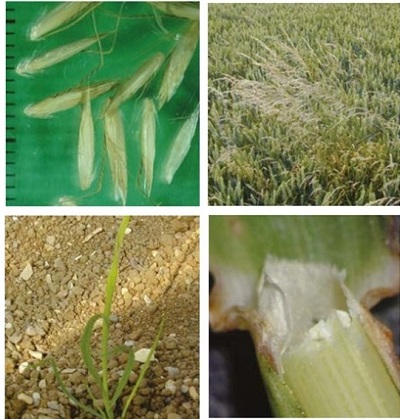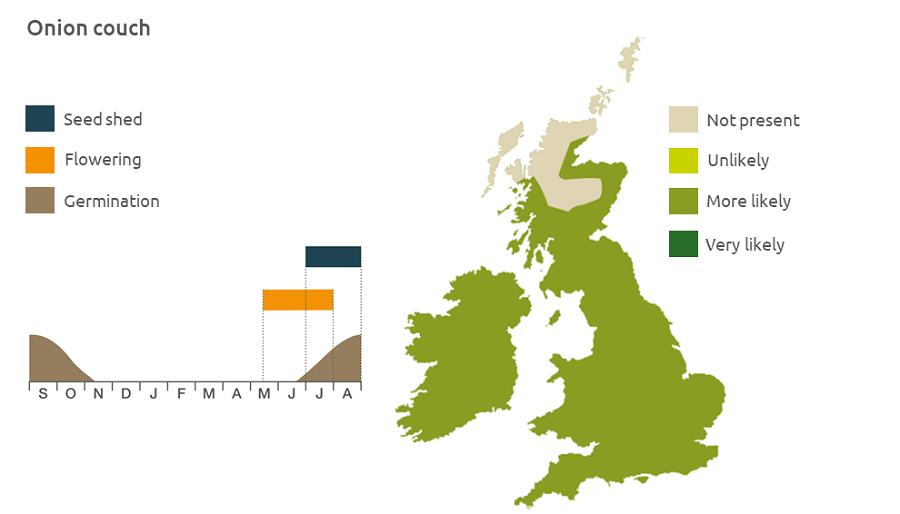- Home
- Knowledge library
- Distribution and biology of onion couch in the UK
Distribution and biology of onion couch in the UK
Onion couch is a common arable grass weed found throughout most of the UK. Find out how to identify and control it.
Overview
Onion couch (Arrhenatherum elatius) is a troublesome weed and difficult to control on cultivated fields. The plants can overwinter and new shoots are produced from March. The non-bulbous form can grow from stem bases detached during ploughing, but the bulbous form grows only from seed. It is encouraged by direct drilling of arable crops.
Description
Onion couch is a very tall, loosely tufted perennial grass, growing to 150 cm. A series of bulbous swellings at the base of stem gives the grass its common name of onion couch. Leaf blades are flat and finely pointed. The flowerhead is compact and narrow.
Key features
Plant: Bulbous swellings at the base of the stem and yellowish roots.
Flowers/fruit: The spikelets have a single long awn.

Location and life cycle

Geographic distribution
The bulbous form of false oat-grass, onion couch is a common arable weed found all over the British Isles except for high ground above an altitude of 550 m. It is found in a wide variety of habitats on roadside verges, river banks and other waste ground, and in some arable fields.
Soil type
It tolerates a wide range of soil pH, from very limey soils and even limestone scree to neutral soils.
Seed statistics
- Seed longevity: 1–5 years
- Seed weight: 3.33 mg
- Seeds/head: 100
Management
Mouldboard ploughing can bury the stem bases too deep to emerge. Best control will be achieved by herbicides such as glyphosate applied when the grass is actively growing. This can be difficult near and around crops post-emergence and is best done in uncropped land such as summer fallows.
For advice on herbicides, please speak with your agronomist or adviser.
When was this information last updated?
This page is based on content from the encyclopaedia of arable weeds publication. Since it was first released in 2008, the publication has been redesigned several times but not revised. However, it remains a good foundation for general information on the distribution and biology of weeds.

